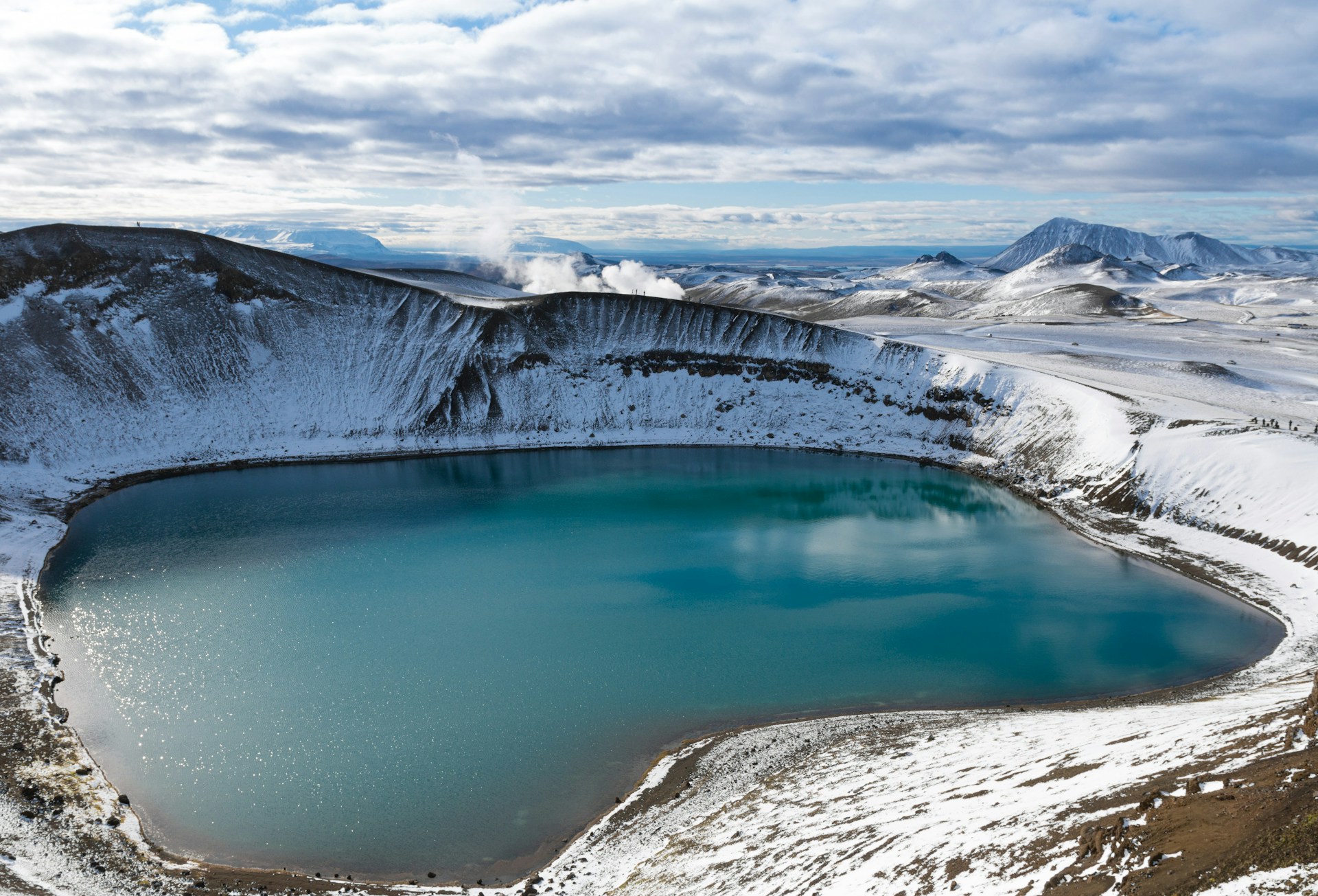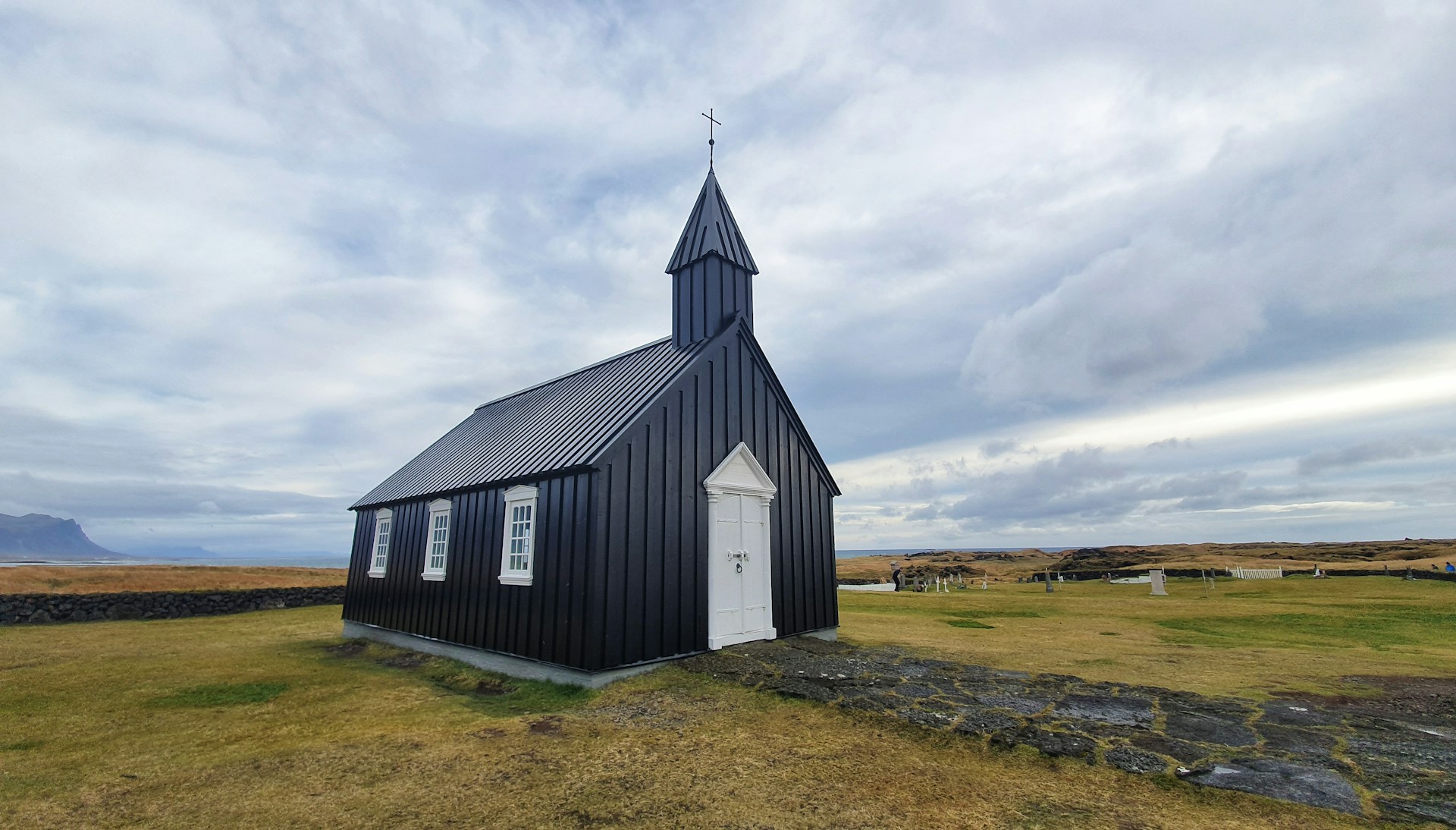Iceland, a land of fire and ice, offers a magical experience every season. When to visit Iceland, especially its famed Golden Circle depends on what one wishes to see and experience.
This guide delves into the unique characteristics of both summer and winter in Iceland, helping you decide the best time to visit.
Golden Circle in Summer
.webp)
When you visit Iceland's Golden Circle during the summer months, you are greeted with an entirely different world compared to the icy landscapes of winter. The summer season in Iceland, encompassing late May through August, transforms the Golden Circle into a vibrant and lively destination, bursting with life and natural beauty.
Why Summer is a Special Time in the Golden Circle
The Golden Circle is a popular route near Iceland's capital, Reykjavik that includes some of the country's most famous and spectacular natural attractions. In summer, these sites are easily accessible and offer various activities and sights unique to this warmer season.
Key Attractions of the Golden Circle in Summer
- Þingvellir National Park: A UNESCO World Heritage Site, Þingvellir is remarkable for its geological significance and historical importance. In summer, the park's lush green landscapes are perfect for hiking and exploring the meeting of the North American and Eurasian tectonic plates.
- The Geysir Geothermal Area: Home to the famous Strokkur geyser, which erupts every few minutes, this area becomes a hive of activity in the summer. The warm weather makes walking around and witnessing these spectacular natural geysers more comfortable.
- Gullfoss Waterfall: Gullfoss, or the 'Golden Waterfall', is a stunning two-tiered waterfall. In summer, the increased flow of glacial meltwater makes Gullfoss even more magnificent. The surrounding area, with its lush landscapes, is ideal for picnics and leisurely walks.

Best Golden Circle Tour From Reykjavik: Geysir, Gullfoss and Thingvellir
Experience Iceland's most famous natural wonders with this top-rated tour departing from Reykjavik.
Advantages of Visiting the Golden Circle in Summer
- Extended Daylight Hours: The days are incredibly long thanks to the midnight sun, offering more time to explore each attraction without the rush.
- Warmer Weather: The milder temperatures make outdoor activitieslike hiking and sightseeing more enjoyable.
- Easier Access: Traveling around the Golden Circle is more accessible in summer with fewer road closures and generally better road conditions.
- Vibrant Nature: The summer bloom brings colors, with wildflowers and greenery creating picturesque landscapes.
- Wildlife Viewing: Summer is an excellent time for birdwatching, especially in areas around Þingvellir and the nearby lakes.
The Best Things to Do in the Golden Circle During Summer
- Hiking and Walking: The summer weather is ideal for exploring the walking trails in Þingvellir National Park and other attractions.
- Photography: The natural beauty and extended golden hours due to the midnight sun offer exceptional photography opportunities.
- Nature Baths: Visit the Secret Lagoon or other geothermal pools to relax in naturally heated waters.
- Horseback Riding: Explore the Icelandic countryside on horseback, a unique way to experience the rugged landscapes.
- River Rafting and Fishing: For adventure enthusiasts, the Hvítá River offers exciting rafting experiences.
Visiting the Golden Circle in summer is an unmissable experience. The longer days allow for exploration, and various outdoor activities take advantage of Iceland's unique landscapes.
Whether you are a nature lover, an adventure seeker, or simply someone looking to experience the best of Iceland, the Golden Circle in summer is an unmissable experience.
Golden Circle in Winter

Winter in Iceland, stretching from late November to March, offers a starkly different but equally mesmerizing experience of the Golden Circle. This period transforms the popular tourist route into a magical winter wonderland, revealing the rugged beauty of Iceland under a blanket of snow and ice.
Why Winter in the Golden Circle is a Unique Experience
During winter, the Golden Circle's attractions take on a new persona. The snow and ice create a serene and almost otherworldly landscape, allowing visitors to see these famous sites in a completely different light.
Key Attractions of the Golden Circle in Winter
- Þingvellir National Park: In winter, Þingvellir becomes a snowy paradise. The snow and ice highlight the park's geological wonders, including the rift valley where the tectonic plates meet.
- The Geysir Geothermal Area: The spectacular contrast between the hot, erupting geysers and the cold winter air is created by the steam and boiling water from Strokkur and other geysers, which creates an ethereal atmosphere.
- Gullfoss Waterfall: Gullfoss is particularly stunning in winter. Parts of the waterfall freeze, forming intricate ice formations, while other portions continue to flow vigorously, creating a breathtaking contrast.
Advantages of Visiting the Golden Circle in Winter
- Northern Lights: Winter is the perfect time to witness the aurora borealis, and the Golden Circle offers several prime viewing spots.
- Fewer Tourists: The winter months see fewer visitors, allowing for a more peaceful and intimate experience with nature.
- Unique Photography Opportunities: The snow-covered landscapes and frozen waterfalls provide unique and captivating photographic scenes.
- Winter Activities: Apart from sightseeing, winter opens up opportunities for snowshoeing, ice skating on natural lakes, and other snow-based activities.

The Classic Icelandic Northern Lights Bus Tour
The classic Icelandic Northern Lights bus tour offers an enchanting journey away from Reykjavik's city lights to seek out the spectacular aurora borealis in Iceland's dark countryside.
The Best Things to Do in the Golden Circle During Winter
- Chase the Northern Lights: The clear winter nights are ideal for aurora hunting, a must-do activity in Iceland.
- Snowmobiling and Glacier Tours: Venture onto Langjökull glacier for an exhilarating snowmobile tour.
- Ice Caving: Explore the natural ice caves forming in the Golden Circle glaciers.
- Relax in Geothermal Pools: Soak in the warm waters of natural hot springs like the Secret Lagoon, surrounded by snow and ice.
- Winter Hiking: With the right gear, hiking in Þingvellir National Park offers a unique winter experience.
The Golden Circle in winter is a testament to Iceland's enduring beauty, offering a quieter, more reflective experience of its most famous natural sites. It's a season that combines the thrill of winter activities with the serene beauty of a snow-laden landscape, making it an unforgettable visit for those who dare to brave the cold.
Differences Between Summer and Winter in Iceland

Iceland's Golden Circle, a route encompassing some of the country's most famous natural wonders, offers vastly different experiences in summer and winter. Understanding these differences can help travelers choose the best time for their visit.
Daylight Hours and Climate
- Summer: Long daylight due to the midnight sun, with up to 24 hours of day around the summer solstice. The weather is milder, though it can still be unpredictable, with temperatures ranging from 10°C to 15°C.
- Winter: Short daylight hours, with only a few hours of light in the deepest winter months. The climate is colder, often dropping below freezing, with snowy and icy conditions.
Landscape and Scenery
- Summer: Lush green landscapes, blooming wildflowers, and fully flowing waterfalls. The thawed ground allows access to highland areas and hiking trails.
- Winter: Snow and ice transform the landscape into a serene winter wonderland. Frozen waterfalls and snow-covered fields create a picturesque but more challenging environment.
Accessibility and Tourist Volume
- Summer: Most areas are easily accessible, with higher tourist volume, especially at popular spots like Gullfoss and Geysir.
- Winter: Some roads and highland areas may be inaccessible due to snow and ice and fewer tourists. However, winter requires more preparation and caution while traveling.
Wildlife and Natural Phenomena
- Summer: An excellent time for birdwatching and observing Iceland's flora. The midnight sun creates unique natural phenomena with prolonged golden hours for photography.
- Winter: The focus shifts to the awe-inspiring northern lights. The stark winter landscapes also offer a chance to see wildlife adapted to the harsher conditions.
Is Iceland's Golden Circle Better in Summer or Winter?
The Golden Circle in Iceland offers unique experiences in both summer and winter, and neither season can be considered definitively better. It depends on what you want to experience: Summer provides longer daylight hours and warmer weather, ideal for hiking and sightseeing. At the same time, winter offers the chance to see the northern lights and experience Iceland's landscapes transformed into a snowy wonderland.

Exclusive Small Group Tour: Northern Lights Adventure in Iceland
Set out on an extraordinary adventure to witness one of nature's most captivating phenomena – the Northern Lights. Through our meticulously designed small group tours, we encourage you to plunge into the magic of the Aurora Borealis...
Final Thoughts
Whether you opt for an Icelandic summer with its endless daylight and warmer weather or a winter trip to experience Iceland's serene snowy landscape and magical northern lights, each season in the Golden Circle presents a distinct and unforgettable adventure. In the summer, you can embark on a road trip under the midnight sun, exploring the vibrant beauty of an Iceland summer, from the lush valleys to the warm, inviting waters of the Blue Lagoon.
Contrastingly, winter in Iceland transforms the landscape into a wonderland of snow, offering unique experiences like soaking in the Blue Lagoon surrounded by all the snow or exploring the frozen wonders on a winter-time road trip. Your decision to visit Iceland in summer or winter should be guided by the experiences you seek in this beautiful country, with each season holding its allure and charm.
FAQs
Which is the best month to visit Iceland?
When planning a trip to Iceland, the timing can depend on your preferred activities. The best time to witness the Northern Lights is between September and March. The ideal time for those interested in summer activities is between June and August. However, the best time to visit Iceland is generally during summer.
What is the stormiest month in Iceland?
Like Spring, Autumn is a short season in Iceland, lasting from September to October. Autumn is the stormiest month of the year as the wind and rain begin to pick up.
Is it safe to drive the Golden Circle in winter?
The entire route around the Golden Circle is paved and well-maintained. If you have a few days in Reykjavík, you can easily pick a good weather window for exploring the Golden Circle, and the route will be no more challenging to drive than in summer.
Are there any entrance fees for the attractions in the Golden Circle?
While it costs nothing to enter the Golden Circle, you must rent a car and pay entrance fees at some sites. The total cost will depend on how long you rent a car, the type of accommodation you stay at, how many ticketed sites you visit, and where you eat.
Is it better to drive or take a tour in Iceland?
If you don't have a confident driver in your group, opt for a guided tour. Tour operators have ample experience driving in all types of conditions in Iceland, so you can be assured that you'll be safe while traveling to and from the attractions.


